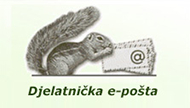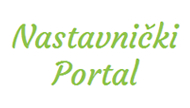TITLE OF COURSE: Research Methodology 3
STATUS OF COURSE/MODULE (REQUIRED/ELECTIVE): Required
NAME OF COURSE/MODULE TEACHER: Borna Fuerst-Bjeliš; Vuk Tvrtko Opačić; Laura Šakaja
LANGUAGE OF INSTRUCTION IN COURSE/MODULE: Croatian, English
NUMBER OF INSTRUCTION HOURS: 12
OUTLINE OF COURSE/MODULE CONTENT
Semiotics and Symbolics of Landscape
The material signs of the process of examining history and the application of the new heritage policy in the public space of a transitional city. The example of Zagreb: research into the role of monuments and street toponyms in post-socialist identity building. Research Methodology: discourse analysis, quantitative analysis of data with the application of cartographic methods, and the interpretative method.
Mental maps and imaginative geography
Conceptions on the configuration and structure of space. Attitudes on space, spatial preferences, identification and valuation. Spatial stereotypes. Research Methodology: interview research, statistical analyses, GIS analyses, interpretative analysis.
Spatial expressions of ethnic and religious identity
The role of spatial terms of reference in religious and ethnic relations (examples: the studies on Banovina and Međimurje). The degree of connection between social distance and physical distance. Research Methods: qualitative research (interviews), analysis of social distance according to the Boradus Scale; quantitative methods, interpretative method.
Regions: spatial perceptions and identities
Vernacular and formal elements, notions of regions, conceptualisation in traditional regions, and the issue of spatial and/or regional identities / identity of a region. Research Methodology: analysis of the meaning and symbolics of geographical names on historical maps. Qualitative and quantitative analyses (polling and interviews), cartographic and GIS analyses.
Croatian border areas; cultural landscapes and identities in multicultural areas
Bordering areas are areas in which a multiplicity of contacts exist (culture, religious systems, complex ethnic structures and imperial systems), which also produce a multiplicity of perceptions and images. Research Methodology: research into past images of the world through maps are of particular significance in multi-cultural spaces. Through a series of examples – studies of Croatian bordering areas - the symbolic strata of maps are revealed, leading into a process in which one can create an image of the past, and open up a treasure trove of perceptions in the multi-cultural realities of Croatia’s bordering areas.
Natural and cultural heritage as part of the real/potential basis of tourism attractions
Identification and systematisation of elements of natural and cultural heritage as tourism attractions. The hierarchy of heritage elements in relation to real/potential meaning in tourism evaluation. Examples in Croatia. Research Methods: identification and systematisation (the representative nature of heritage elements in heritage registers, perception of the importance of heritage elements on the part of the local population, the perception of the tourism attractiveness of heritage on the part of tourists), statistical analyses, direct polling method, in-depth interview method, visualisation of spatial data with the aid of thematic cartographic display.
Tourism and recreation evaluation of natural and cultural heritage
Representation of heritage elements in the tourism offer. Models integrating heritage elements in the tourism offer. Spatial implications of tourism and recreational evaluation of heritage elements. Studies of examples: tourism evaluation of speleological units in Croatia, lighthouses as part of the tourism offer of Croatia, tourism and recreational evaluation of the Medvednica Nature Park. Research Methods: statistical analyses, direct polling method, in-depth interview methods, visualisation of spatial data with the aid of thematic cartographic display.
READING LIST
Bauer, M. W. i Gaskell, G., 2003: Qualitative researching with text, image and sound, Sage Pub.
Bočić, N., Lukić, A., Opačić V. T., 2006: Management models and development of show caves as tourist destinations in Croatia, Acta Carsologica, vol. 35, br. 2, 13 -21.
Fuerst-Bjeliš, B., 2012: Imaging the Past: Cartography and Multicultural Realities of Croatian Borderlands, Cartography - A Tool for Spatial Analysis, Carlos Bateira (ur.), InTech.
Fuerst-Bjeliš, B., 2014: Teritorijalizacija i deteritorijalizacija pograničnih društava: Morlakija i Mala Vlaška. // Acta geographica Bosniae et Herzegovinae. 1, 2; 53-6
Glamuzina, N., Fuerst-Bjeliš, B., 2015: Historijska geografija Hrvatske / Trogrlić, M.(ur.).Split. Sveučilište u Splitu, Filozofski fakultet.
Gould, P., White, R., 1986: Mental maps, Boston, Allen & Unwin.
Graham, B., Ashworth, G. J. , Tunbridge, 2000: A geography of heritage: power, culture and economy, Arnold, London.
Jansen-Verbeke, M., Priestley, G. K., Russo, A. P. (ur.), 2008: Cultural resources for tourism: patterns, processes and policies, Nova Science Publishers, New York.
Jones, M. & Paasi, A. (ur.), 2015: Regional Worlds. Advancing the geography of regions, Routledge, London and New York.
Kušen, E., 2002: Turistička atrakcijska osnova, Institut za turizam, Zagreb.
Šakaja, L., 2015: Uvod u kulturnu geografiju. Laykam international, Zagreb.
Vukosav, B., Fuerst-Bjeliš, B., 2016: Labels of Interest Groups as Indicators of a Vernacular Region: A Case Study in Croatia. // Tijdschrift voor economische en sociale geografie. 107, 4; 454-467
Vukosav, B.; Fuerst-Bjeliš, B., 2015: Medijska percepcija prostornih identiteta: konstrukcija imaginativne karte dalmatinske unutrašnjosti. // Geoadria. 20, 1; 23-40
DESCRIPTION OF INSTRUCTION METHODS
Lectures and consultations. Each course teacher shall deliver 2-4 lectures, depending on the representation of the theme and methodology.
DESCRIPTION OF COURSE/MODULE REQUIREMENTS
Regular attendance at lectures. Giving form to the methodological framework of his/her own research. Fulfilment of obligations shall be confirmed by the course teachers by their signatures in the student’s record book (Index).
DESCRIPTION OF MONITORING OF TEACHING QUALITY
The mechanisms of institutional monitoring of teaching quality (the Regulations on Doctoral Study of the University of Zagreb, Form DR.SC. -04, DR.SC. -09).
ECTS: The ECTS system shall not be applied.




